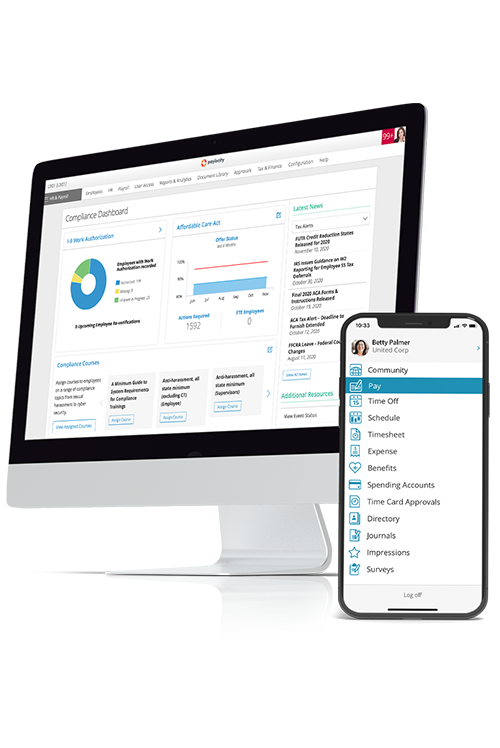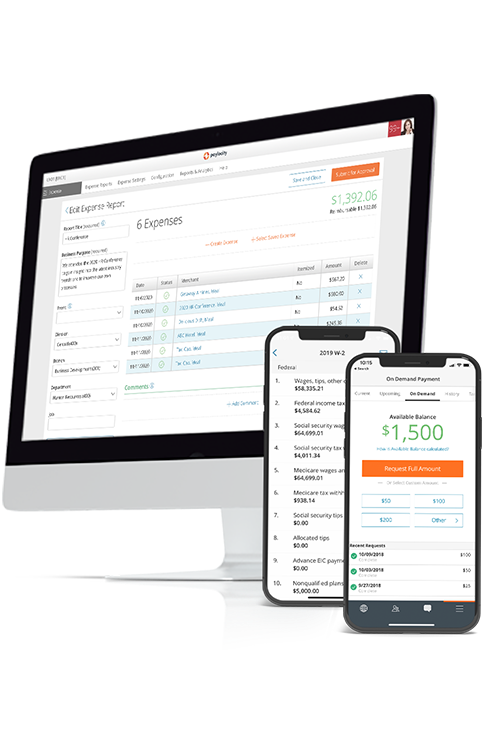Related Learning

HRIS Implementation: A Success Story
Get ready to switch your HR and payroll technology solution with these tips for a smooth transition.
Congratulations! You’ve just decided to switch to a new HR and payroll system. Now what?
Finally getting to use the technology of your dreams is exciting, but let’s face it: Implementing major new business software can be intimidating. Especially a solution so central to the everyday operations of your business.
While implementation is largely in the hands of your provider (which is why it’s vital you choose the right one!), your preparation and responsiveness will make all the difference in how smoothly the process goes. Part of your job as the customer is to hold the vendor accountable for delivering on your expectations.
This article dives into those expectations — what’s reasonable, what’s ambitious, and what’s out of scope — so you can set appropriate expectations with your stakeholders, including your workforce of end users.
First, let’s look at what you selected and why.
Choosing an HRIS Step by Step
A lot goes into the decision to switch to a new Human Resources Information System (HRIS) or Human Capital Management (HCM) system. The solution you choose will impact all employees at all levels, so finding one that meets your specific needs takes alignment from the C-suite to the frontline.
The HRIS evaluation process also takes time and patience. Why? Because it’s worth it. You don’t want to be back at the table negotiating with a new vendor in a year because you didn’t do your due diligence.
In our webinar, HCM Selection Simplified, we explain — simply — how to navigate these 15 steps in the selection process:
HRIS Implementation Steps
1. Identify business needs and objectives.
2. Form a cross-functional project team.
3. Assess current HR processes and systems.
4. Define functional and technical requirements.
5. Set a budget and timeline.
6. Research vendors.
7. Draft and issue a Request for Proposal (RFP).
8. Create an evaluation scorecard.
9. Review proposals and shortlist vendors.
10. Schedule demos.
11. Evaluate support, security, and compliance.
12. Gather internal feedback.
13. Conduct a cost-benefit analysis.
14. Check references.
15. Make your final selection and negotiate contracts.
What Is HR’s Role in HRIS Implementation?
You may not have to do a formal needs analysis to know there are gaps in your HR and payroll software. In fact, 55% of HR leaders say their current technology solutions do not cover current and future business needs.
During the selection process, you had to get buy-in from leadership across the organization — finance, IT, operations — as well as your HR team. Several of these stakeholders will have been hands-on, participating in demos and vendor scoring conversations.
Implementing a new HRIS requires buy-in from everyone in your organization. While your selection committee may know why you’re making the switch, your end users — namely, managers and employees — will need convincing.
The success of any change effort starts and ends with people, and that’s certainly true for HRIS implementation. It’s never too early to think about how you’ll communicate the change to employees, train them on the new system, and facilitate widespread adoption.
Ready to Steer your Organization Through Change?
Dig into effective change management practices and explore HR’s vital role as a facilitator of change in the article, Leading Transformation: Change Management Tips for HR.
The Five Phases of HRIS Implementation
Technology migration isn’t necessarily simple, but it doesn’t have to be scary. Your provider should do most of the heavy technical lifting, but you’ll be closely involved throughout the process answering questions, reviewing data, and learning how everything works.
Your HRIS implementation project plan and timeline will depend on multiple factors, from the number of employees you have to the level of customization you require. Today’s cloud-based systems, like Paylocity, offer configuration options that combine software modules to fit your unique needs. Typically, implementation starts with Payroll and Time & Labor, with other modules like Benefits Administration and Talent Management rolling out after.
Insider Tip
During the HCM selection process, ask potential vendors to outline their implementation process. Vet their customer service by asking colleagues and reading reviews from other clients.
Phase 1: Initiation and Planning
In this phase, your new provider will want to get to know you a little better. You’ll likely have a primary point of contact, but you may work with specialists in payroll and taxes, HR and compliance, benefits, or other areas.
Likewise, on your side, you will probably assign a primary administrator (that might be you!), but you may need other members of your team to complete a high-level needs analysis. From there, you and your provider will confirm the scope and timeline of the project.
Phase 2: Platform and Data Readiness
Your provider will continue to learn about your organization’s specific use cases while preparing for data extraction (moving information from your existing payroll system to your new HRIS.) This step is followed by plenty of testing before loading in your employee data.
Phase 3: Configuration and Testing
This is a crucial stage in the implementation process to ensure your HCM platform is set up correctly for your organization. You can expect to review lots of data, looking for discrepancies in earnings, deductions, tax information, and organizational structure.
Once initial testing and validation of payroll are completed, you might begin implementation of the other modules in your custom solution.
Learn More: HR 101: What Are HRIS Integrations?
Phase 4: Training and Rollout
As you’re getting comfortable with the system, you can begin to train staff on key functionality. When selecting an HCM provider, be sure to ask about their training programs for administrators and managers. And remember, before granting access to your employees, launch a communications plan that answers their common big questions:
- How do I set my password?
- Where can I see my paystub?
- What should I do if I notice an error in my information?
- How do I clock in?
- How do I request time off?
Phase 5: Go Live
This is it! The moment you’ve been waiting for. But first: Auditing is a critical step in the payroll process. Prior to processing your first live payroll, be sure to work closely with your provider to review audit reports and double-check calculations.
How Long Does HRIS Implementation Take?
While the length of your implementation will depend on the complexity of your organization and the complexity of the solution you choose, you can use the following timeline for planning purposes.
|
Start |
Design |
Validate |
Finalize |
Launch |
|
|
|
|
|
|
2 weeks |
3-4 weeks |
6-8 weeks |
3-4 weeks |
2 weeks |
What Comes After HRIS Implementation?
The world — and the world of work — change rapidly. Employment legislation evolves, as do employee expectations and competition for talent. Hopefully, you selected an HCM platform that will grow with your business and a provider who can keep you ahead of compliance curves.
Implementation should be just the start of a beautiful friendship with your HRIS provider. Once implementation is complete and your system is up and running, make sure you know how to get the ongoing support from your provider that will help you maximize usage. Also ask how the vendor rolls out new software updates and refreshes tax information.
At Paylocity, we’re committed to helping you make the most of your new platform. Our Implementation Consultants and Client Services team are 100% internal and based in the U.S.
Ready to explore your HRIS provider options? Request a demo today!




